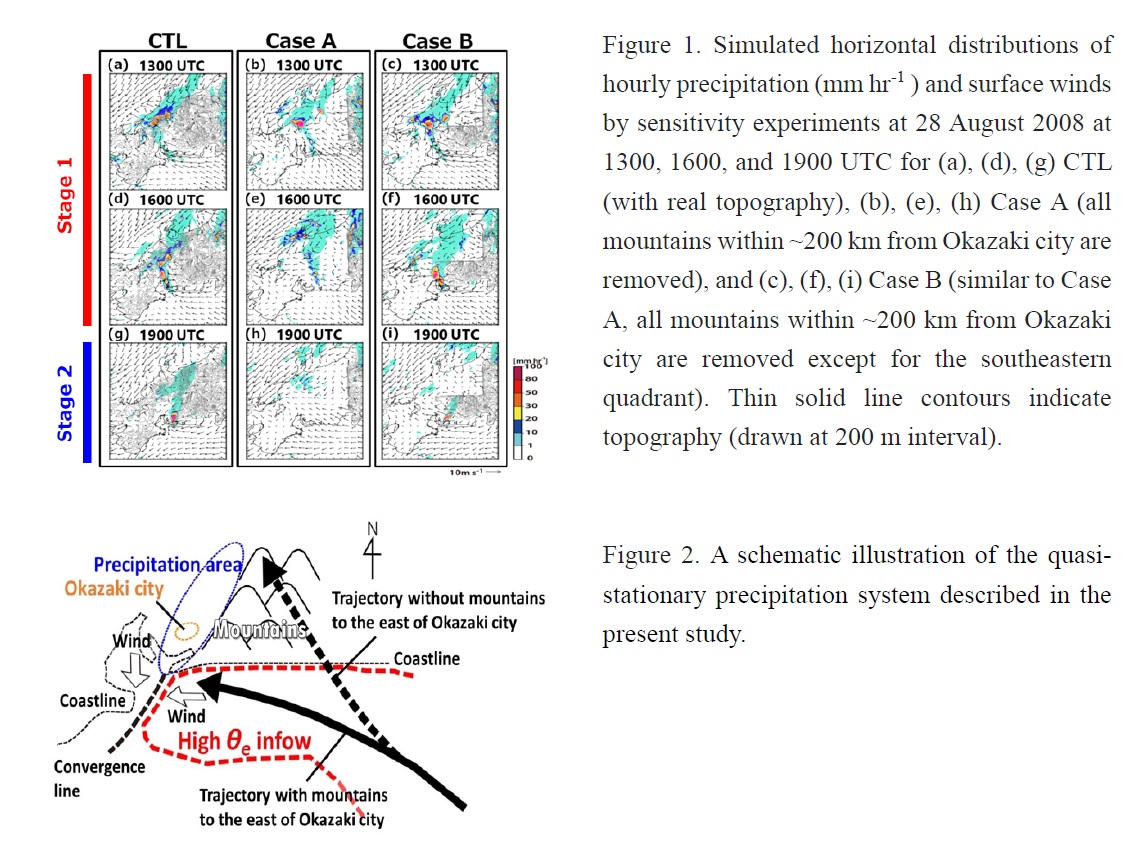Graphical Abstract
Takasaki, Y., M. Yoshizaki, A. Suzuki-Parker, and Y. Watarai, 2019: Sensitivity of quasi-stationary band-shaped precipitation system to topography: A case study for 28 August 2008 Okazaki heavy rainfall event. J. Meteor. Soc. Japan, 97, 453-466.
https://doi.org/10.2151/jmsj.2019-026
Graphical Abstract with highlights
Plain Language Summary: This study presents sensitivity numerical experiments to examine the impact of surrounding mountainous topography on the quasi-stationarity of the precipitation system using the Weather Research and Forecasting (WRF) model with 500 m horizontal resolution. In an experiment without the mountains to the east of Okazaki city, the quasi-stationary precipitation system was not reproduced. On the other hand, experiments including eastside mountains produced a lowlevel convergence in south of Okazaki city, resulting in the quasi-stationary precipitation system and prolonged precipitation as observed near Okazaki city.
Highlights:
- In Case A, unlike CTL, the precipitation system dissipated by 1900 UTC. In contrast, the Case B experiment reproduced the quasi-stationary precipitation from 1600 UTC to 1900 UTC around Okazaki city (Fig.1).
- Southeasterly winds from the ocean shifted to easterly due to enhanced pressure gradient associated with presence of the mountains to the east of Okazaki city.
- The sustained easterlies continuously supplied warm and moist air to Okazaki city and formed a low-level convergence to restrict the eastward movement of the precipitation system (Fig.2).







